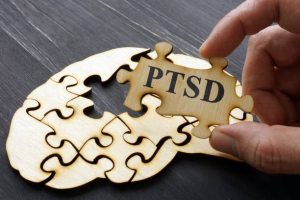 Post-Traumatic Stress Disorder (PTSD) is a mental health condition that can develop after experiencing or witnessing a traumatic event. This disorder affects individuals across all walks of life and can have profound impacts on their daily functioning. Despite increased awareness, many misconceptions still surround PTSD, making it essential to continue spreading accurate information and promoting effective management strategies. This article aims to provide insights into PTSD, effective management techniques, and ways to support individuals coping with this challenging condition.
Post-Traumatic Stress Disorder (PTSD) is a mental health condition that can develop after experiencing or witnessing a traumatic event. This disorder affects individuals across all walks of life and can have profound impacts on their daily functioning. Despite increased awareness, many misconceptions still surround PTSD, making it essential to continue spreading accurate information and promoting effective management strategies. This article aims to provide insights into PTSD, effective management techniques, and ways to support individuals coping with this challenging condition.
Understanding PTSD
PTSD is characterized by a range of symptoms that can be broadly categorized into four groups: intrusive memories, avoidance behaviors, negative changes in thinking and mood, and alterations in arousal and reactivity.
- Intrusive Memories: These include recurring, involuntary memories of the traumatic event, distressing dreams or nightmares, and flashbacks—a sense of reliving the event. These intrusive thoughts can be triggered by reminders of the trauma, leading to significant distress and emotional pain.
- Avoidance Behaviors: Individuals with PTSD often go to great lengths to avoid reminders of the trauma. This can involve steering clear of places, people, activities, or even thoughts that evoke memories of the traumatic experience. Avoidance can lead to social isolation and a reduced quality of life as individuals may withdraw from activities they once enjoyed.
- Negative Changes in Thinking and Mood: PTSD can lead to pervasive negative emotions such as fear, anger, guilt, or shame. Individuals may develop negative beliefs about themselves or the world, such as “I am bad” or “The world is completely dangerous.” They might also experience diminished interest in activities, feelings of detachment from others, and difficulty experiencing positive emotions.
- Alterations in Arousal and Reactivity: This can include being easily startled, feeling tense or “on edge,” having difficulty concentrating, and experiencing sleep disturbances such as insomnia. Individuals may also exhibit irritable or aggressive behavior and engage in self-destructive activities.
The onset of PTSD symptoms can occur within a month of the traumatic event, but sometimes symptoms may not appear until years later. The severity and duration of the symptoms can vary, but they can significantly interfere with an individual’s ability to function in daily life.
The causes of PTSD are complex and multifaceted. While exposure to a traumatic event is necessary for the development of PTSD, not everyone who experiences trauma will develop the disorder. Factors that increase the risk include the intensity and duration of the trauma, a history of previous trauma, lack of social support, and pre-existing mental health conditions.
Neurobiological factors also play a role in PTSD. Research indicates that PTSD is associated with changes in brain regions involved in stress response and emotion regulation, such as the amygdala, hippocampus, and prefrontal cortex. These changes can affect how individuals process and respond to fear and stress.
Effective PTSD Management Strategies
Managing PTSD involves a combination of therapeutic interventions, self-care practices, and support systems. Cognitive Behavioral Therapy (CBT), particularly trauma-focused CBT, is one of the most effective treatments. This therapy helps individuals process and reframe their traumatic experiences, reducing the intensity of symptoms. Eye Movement Desensitization and Reprocessing (EMDR) is another therapeutic approach that has shown significant success in treating PTSD. EMDR involves guided eye movements while recalling traumatic events, helping to desensitize emotional responses to these memories.
In addition to professional therapy, medication can be prescribed to manage symptoms such as anxiety, depression, and insomnia. Selective serotonin reuptake inhibitors (SSRIs) are commonly used to treat PTSD. However, it’s essential for individuals to work closely with their healthcare providers to find the most suitable treatment plan.
Self-care practices play a crucial role in managing PTSD. Regular physical activity, a balanced diet, and sufficient sleep contribute to overall well-being and can alleviate some symptoms. Mindfulness and relaxation techniques, such as meditation and yoga, help reduce stress and improve emotional regulation. Developing a structured routine and setting realistic goals can also provide a sense of stability and accomplishment.
Supporting Individuals with PTSD
Supporting someone with PTSD requires patience, empathy, and understanding. Here are some ways to help:
- Educate Yourself: Learn about PTSD to better understand what your loved one is going through. This knowledge can help you provide informed and compassionate support.
- Be a Good Listener: Offer a non-judgmental, supportive ear. Allow them to share their experiences at their own pace without pressure.
- Encourage Professional Help: Gently encourage seeking professional treatment, emphasizing that it is a sign of strength to ask for help.
- Create a Safe Environment: Ensure that their environment is calm and supportive. Reduce exposure to potential triggers and respect their need for space when necessary.
- Support Self-Care: Encourage and participate in self-care activities. Join them in exercise, mindfulness practices, or hobbies that promote relaxation and well-being.
- Be Patient: Recovery from PTSD is a gradual process. Celebrate small victories and remain patient during setbacks.
PTSD is a serious but manageable condition. Increasing awareness, promoting effective management strategies, and providing robust support systems can make a significant difference in the lives of those affected. By fostering a compassionate and informed community, we can help individuals with PTSD navigate their healing journey and lead fulfilling lives. If you or someone you know is struggling with PTSD and you would like additional support, we would love to connect with you. You can reach out to our intake team at 518. 465.3813 to make an appointment with Capital EAP.
By Denelle Abel, LMHC, SAP, EAP Counselor
